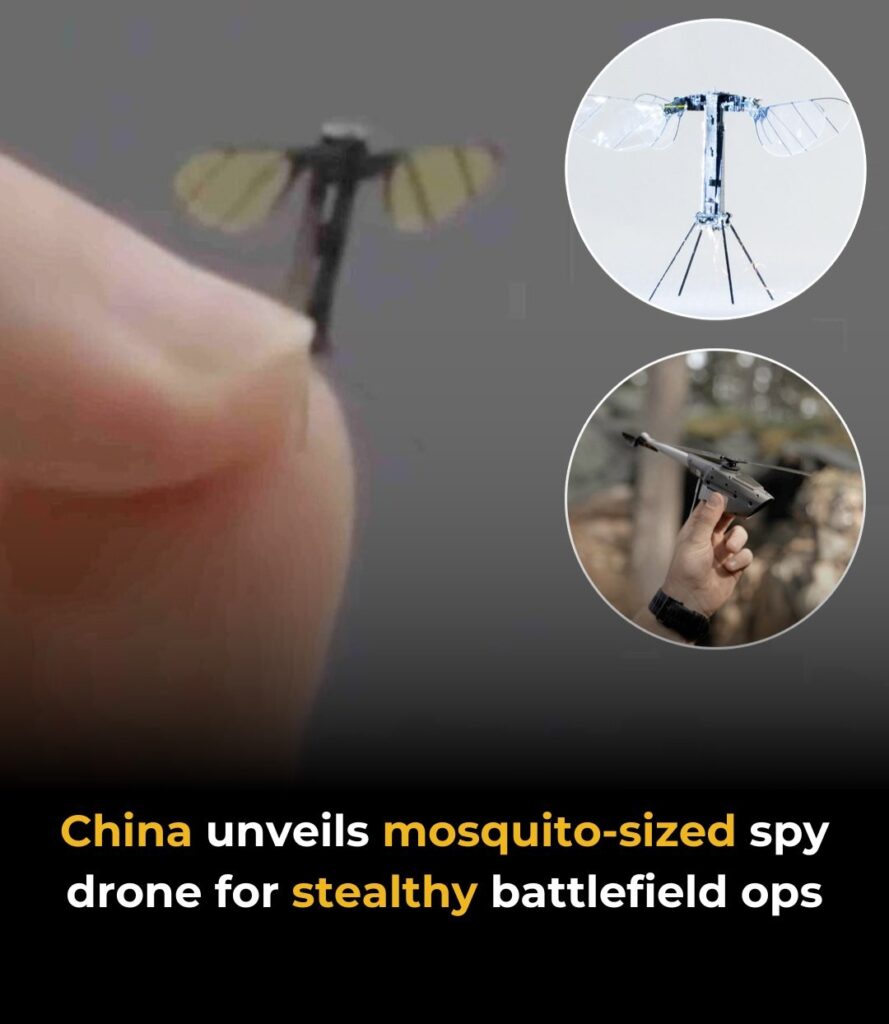A Chinese military robotics lab has unveiled a mosquito-sized drone designed for covert reconnaissance and battlefield use, adding to a growing global interest in micro-scale aerial vehicles. Developed at the National University of Defence Technology (NUDT) in Hunan, the insect-like robot was showcased on CCTV’s military channel, where researchers demonstrated its incredibly small form—complete with leaflike wings and hair-thin legs. While its compact size makes it ideal for stealth operations, it also presents serious design challenges, requiring the integration of power systems, sensors, and control circuits into a nearly invisible frame.

China’s tiny drone joins a broader international push in microbotics. Norway’s palm-sized Black Hornet is already in active use by militaries around the world, offering live visual and data feedback through a handheld controller. Its latest model, the Black Hornet 4, recently received recognition from the US Department of Defence for improvements in battery life and communication range.
Similar projects like Harvard’s RoboBee, which can perch or even swim before taking flight, and ongoing US Air Force research into miniature drones, highlight how global defense and research sectors are converging on micro-scale technologies. Beyond military use, these tiny machines are also being studied for medical applications, from targeted therapy to diagnostics.

